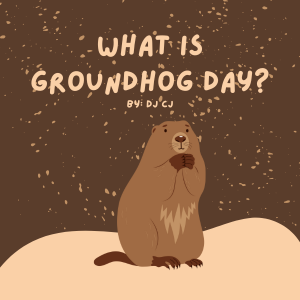Groundhog Day, celebrated every February second, is a fun tradition where a groundhog, Punxsutawney Phil, "predicts" the weather. This event has become a loved part of winter. Of course, the prediction isn’t always accurate, but that's a part of the fun. It's more about the tradition of it, Groundhogs Day has become a fun and exciting way to celebrate the change in seasons and take a break from the cold winter months. Let’s take a look at where this tradition came from and what it means today.
History and Origins
The first Groundhog Day celebration was introduced on February 2 of 1877 as a Pennsylvania German custom. Its roots can be traced back to a European holiday called Candlemas, which is also celebrated on February 2. February 2 was considered the halfway point between the winter solstice and spring equinox. During this time, people truly believed animals could predict the weather. They would use small animals such as hedgehogs or badgers.
Candlemas Day and Groundhog Day are both holidays that originated from old Christian traditions and are both connected to weather predictions. Christians believed that if it was sunny on Candlemas we would have six more weeks of winter weather. The weather predictions made on Candlemas Day influenced the development of Groundhog Day. However, because there were no hedgehogs or badgers in Pennsylvania, the Germans included other small animals to see their shadow.
In 1877, Clymer Freas, a local newspaper editor in Punxsutawney, Pennsylvania, came up with the idea for the first Groundhog Day celebration. He shared his ideas with the groundhog hunters of Punxsutawney Elks Lodge. On February second, 1877, club members gathered at Gobbler's Knob, Punxsutawney, Pennsylvania and watched as the first groundhog came out of his burrow and saw his shadow.
The Tradition: Punxsutawney Phil’s Prediction
Every year in Punxsutawney, Pennsylvania, thousands of people gather to witness Phil emerging from his burrow. If the Groundhog sees its shadow it will go back into its burrow and we will have six more weeks of winter. If the groundhog doesn't see its shadow, spring will come early. This year when Punxsutawney Phil came out of his burrow he saw his shadow and retrieved back to his den. This means this year we will have 6 more weeks of winter and not an early spring.
Conclusion
Groundhog Day has evolved from an ancient weather-predicting tradition into a fun annual event that brings people together. Whether or not Punxsutawney Phil’s prediction is scientifically accurate, it's a chance to look forward to the warmer days and celebrate the changing seasons. Every year, when we watch Punxsutawney Phil, we’re reminded that no matter what the weather is like, change is always coming.
